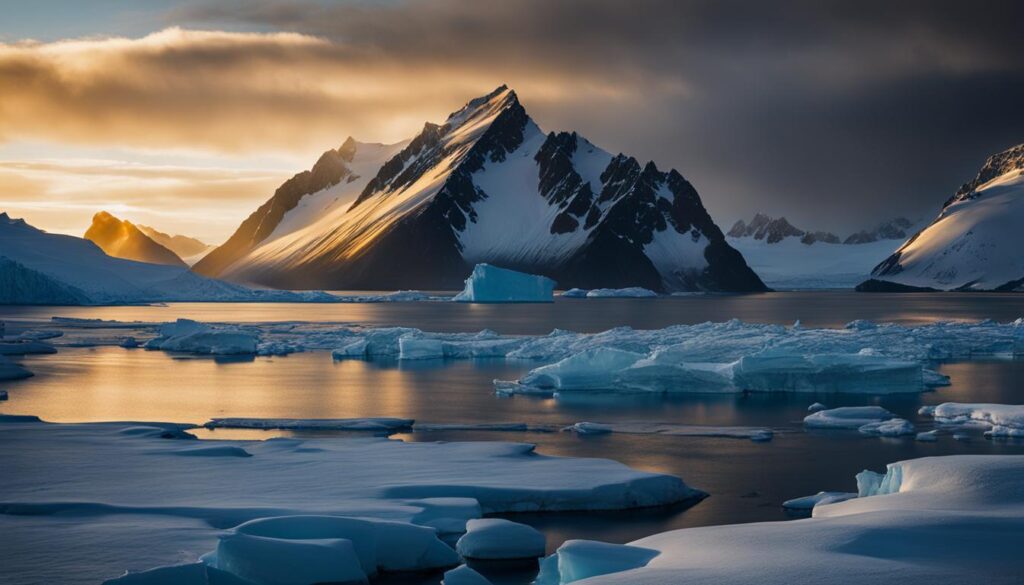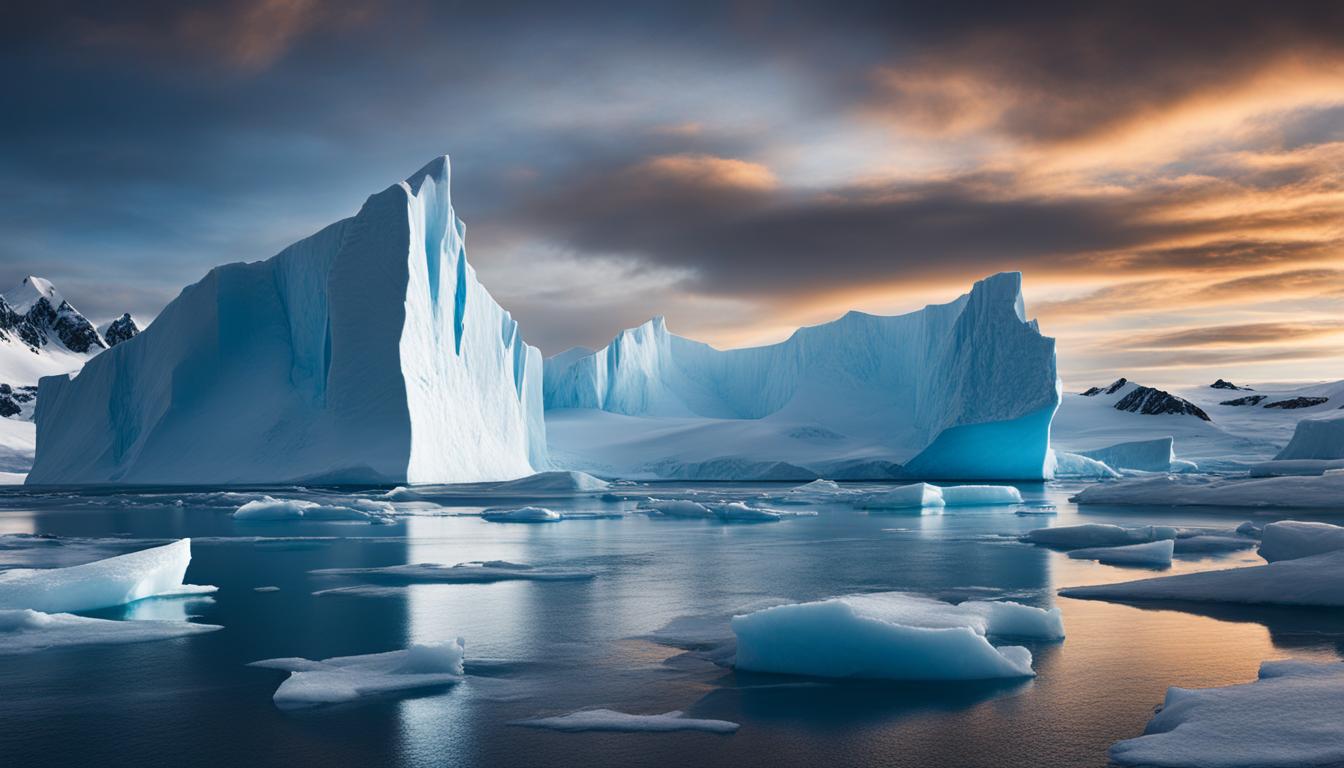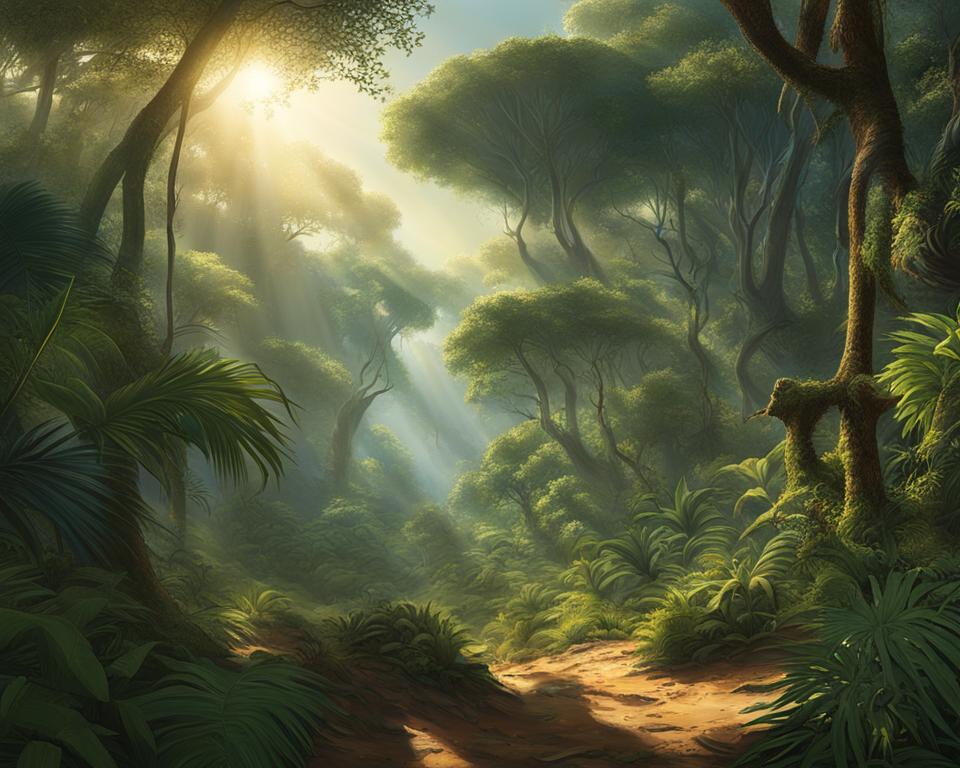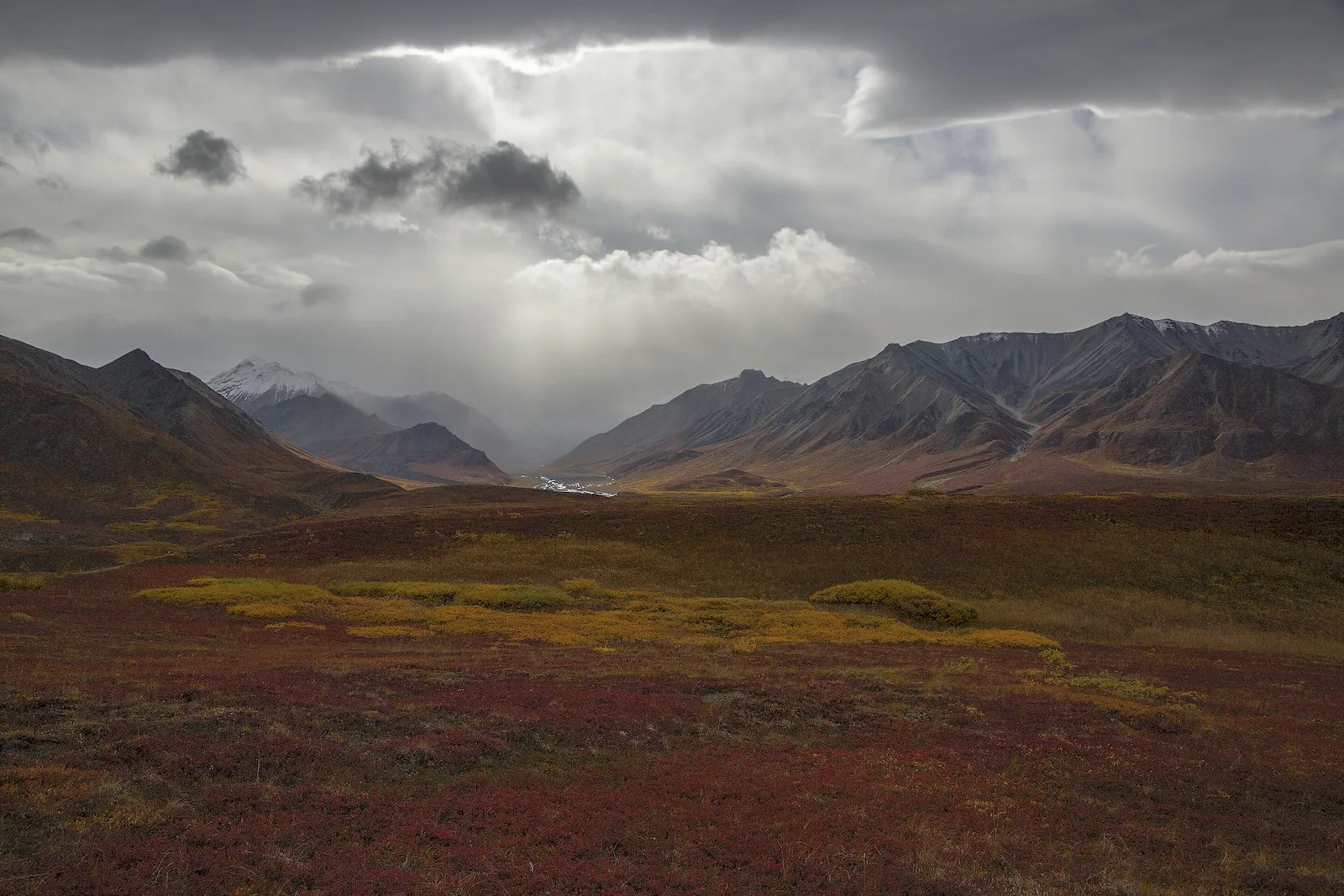When it comes to the polar regions, the Arctic and Antarctica are often mentioned in the same breath. However, these two areas have distinct differences that set them apart in terms of geography, climate, wildlife, and human presence. Understanding these disparities is essential in appreciating the unique characteristics that make each region so fascinating. Let’s explore the key contrasts between the Arctic and Antarctica.
Key Takeaways:
- The Arctic and Antarctica exhibit contrasting geographic features and locations.
- Climate-wise, the Arctic experiences milder winters compared to the extreme cold of Antarctica.
- Both regions are home to diverse and unique wildlife, with polar bears in the Arctic and penguins in Antarctica.
- Human presence in the Arctic is more permanent, while Antarctica is mainly visited by researchers during the summer season.
- The Arctic’s terrain includes mountains and tundra, while Antarctica is dominated by ice sheets and strong winds.
Geographic Differences
The Arctic and Antarctica are two distinct polar regions that have unique geography. The Arctic is located north of the Arctic Circle and is surrounded by the Arctic Ocean. It encompasses parts of Greenland, Alaska, Canada, Norway, and Russia. In contrast, Antarctica is situated south of the Antarctic Circle and is a continent surrounded by the Southern Ocean. The Arctic spans approximately 5.5 million square miles, while Antarctica covers nearly the same area, around 5.4 million square miles.
| Geographic Differences | Arctic | Antarctica |
|---|---|---|
| Location | North of the Arctic Circle | South of the Antarctic Circle |
| Main Surrounding Body | Arctic Ocean | Southern Ocean |
| Main Landmasses | Greenland, Alaska, Canada, Norway, Russia | Continent |
| Size | Approximately 5.5 million sq mi | Approximately 5.4 million sq mi |
These geographic differences contribute to the distinct characteristics of each region and shape their ecosystems, climate, and human presence. Understanding the unique geography of the Arctic and Antarctica is essential in comprehending the diverse nature of these polar environments.
Climate and Geography
When it comes to climate and geography, the Arctic and Antarctica are starkly different. The Arctic experiences milder winters compared to its southern counterpart, with average temperatures of around -40 degrees Fahrenheit. In contrast, Antarctica boasts the coldest temperatures on record, with winter temperatures dropping as low as -136 degrees Fahrenheit. This makes it the coldest place on Earth.
The distinctive climate of the Arctic is due in part to the presence of sea ice that covers the Arctic Ocean. This ice plays a vital role in regulating global temperatures and ocean circulation. Conversely, Antarctica is covered by a massive ice cap, with an astonishing 98% of its surface covered in ice. This thick ice cap contributes to Antarctica being the windiest, driest, and coldest region in the world.
Additionally, the geography of these polar regions also differs significantly. The Arctic, located north of the Arctic Circle, includes parts of Greenland, Alaska, Canada, Norway, and Russia. It spans about 5.5 million square miles. On the other hand, Antarctica is situated south of the Antarctic Circle and is a continent surrounded by the Southern Ocean. It covers nearly the same area as the Arctic, approximately 5.4 million square miles.
To summarize, the Arctic and Antarctica have contrasting climates and geographies. While the Arctic experiences milder winters and is characterized by sea ice, Antarctica endures extreme cold temperatures and is covered by a thick ice cap. These distinct features make these polar regions unique and captivating.
Wildlife and Ecosystems
The Arctic and Antarctica are not only polar opposites in terms of their geography and climate, but their wildlife and ecosystems also exhibit striking contrasts. Let’s take a closer look at the unique biodiversity found in each region.
Arctic Wildlife
In the Arctic, a diverse range of wildlife has adapted to the harsh conditions of this frozen wilderness. One iconic resident of the Arctic is the polar bear, which is perfectly adapted to survive in the extreme cold. Other notable Arctic species include Arctic foxes, walruses, and various bird species such as puffins and snowy owls. The Arctic Ocean also teems with life, attracting whales, seals, and a rich diversity of marine organisms.
Antarctic Wildlife
The wildlife in Antarctica is equally fascinating and unique. Penguins, such as the Emperor, Adelie, and Chinstrap penguins, are the most iconic inhabitants of the Antarctic region. These flightless birds have evolved to thrive in the freezing temperatures and are well-adapted to life both on land and in the surrounding waters. Antarctica is also home to various seal species, including the Weddell seal and the Antarctic fur seal. The surrounding Southern Ocean is teeming with marine life, including krill, which forms the basis of the Antarctic food chain.
Ecosystems in the Polar Regions
The Arctic and Antarctica support distinct ecosystems shaped by their unique geography and climate. The Arctic tundra is characterized by vast stretches of frozen plains, dotted with dwarf shrubs, mosses, and lichens. This fragile ecosystem is home to a diversity of small mammals, birds, and insects. In Antarctica, the landscape is dominated by ice sheets, glaciers, and rocky mountain ranges. The continent’s harsh conditions limit plant life to only a few species of mosses and lichens. However, the nutrient-rich Southern Ocean sustains a thriving marine ecosystem, providing food and habitat for a variety of species.
| Arctic Wildlife | Antarctic Wildlife |
|---|---|
| Polar bears | Penguins (Emperor, Adelie, Chinstrap) |
| Arctic foxes | Seals (Weddell, Antarctic fur seal) |
| Walruses | Krill (basis of the Antarctic food chain) |
| Various bird species | |
| Whales |
Both the Arctic and Antarctica are home to a wealth of incredible wildlife and delicate ecosystems. Understanding and protecting these fragile environments is crucial for maintaining the balance of nature and preserving these unique polar regions for future generations to appreciate and study.
Differences in Human Presence
One of the significant differences between the Arctic and Antarctica is the level of human presence in each region. In the Arctic, humans have inhabited the area for thousands of years, with indigenous communities and research stations coexisting in harmony. These communities have developed a deep understanding of the region’s unique environment and have adapted their way of life accordingly. Research stations in the Arctic play a crucial role in studying the region’s climate, wildlife, and ecosystems.
In contrast, Antarctica has a temporary human presence, mainly consisting of researchers who work in research stations during the summer seasons. These stations are set up for scientific exploration and are usually deserted during the harsh winter months when the continent experiences polar nights. The international treaty governing Antarctica prohibits any country from claiming ownership of the continent, ensuring that the focus remains on scientific research and environmental conservation.
The human presence in the Arctic and Antarctica highlights the different approaches taken in each region. While the Arctic has a long-standing history of human habitation and indigenous communities, Antarctica is more focused on international collaboration and scientific research. It is crucial to strike a balance between human activities and the preservation of the unique polar environments in both regions.
| Arctic | Antarctica |
|---|---|
| Long-standing human habitation | Temporary human presence |
| Indigenous communities and research stations | Research stations during summer seasons |
| Scientific research and environmental conservation | International collaboration and scientific research |
Terrain and Landscapes
One of the key differences between the Arctic and Antarctica lies in their terrain and landscapes. The Arctic features rugged and diverse landscapes, including craggy mountains, glaciers, and the iconic Arctic tundra. The tundra is a unique biome characterized by low-growing plants, such as dwarf shrubs, mosses, and lichens. However, due to the presence of permafrost, which is permanently frozen subsoil, trees are unable to grow in this region. Despite its harsh conditions, the Arctic tundra is rich in biodiversity and serves as an important habitat for various wildlife species.
On the other hand, Antarctica is characterized by its vast ice sheets, three major mountain ranges, and strong winds. It is the windiest, driest, and coldest continent on Earth, with most of its surface covered in ice. The Antarctic ice sheet, which averages about 1.9 kilometers in thickness, is the largest ice sheet in the world. The mountain ranges of Antarctica, such as the Transantarctic Mountains and the Ellsworth Mountains, add to the dramatic and majestic scenery of the region. Despite its seemingly inhospitable conditions, Antarctica supports a unique ecosystem that is well-adapted to survive in this extreme environment.
“The Arctic boasts rugged mountains, glaciers, and the iconic Arctic tundra, while Antarctica is dominated by vast ice sheets and towering mountain ranges.”
The Contrasting Landscapes of the Arctic and Antarctica
Table: A comparison of the terrain and landscapes in the Arctic and Antarctica
| Arctic | Antarctica | |
|---|---|---|
| Geography | Rugged mountains, glaciers, Arctic tundra | Vast ice sheets, mountain ranges |
| Vegetation | Dwarf shrubs, mosses, lichens | Minimal vegetation, mainly mosses and lichens |
| Land Coverage | Approximately 5.5 million square miles | Approximately 5.4 million square miles |
| Climate | Milder winters, average temperatures of around -40 degrees Fahrenheit | Extremely cold temperatures, winter temperatures dropping to as low as -136 degrees Fahrenheit |
Both the Arctic and Antarctica offer unique and breathtaking landscapes that are shaped by their geographical features and extreme climates. These distinct terrains contribute to the ecological diversity and scientific significance of these polar regions.

| Phenomenon | Arctic | Antarctica |
|---|---|---|
| Summer Solstice | 24-hour sunlight | No sunlight |
| Winter Season | Normal daylight hours | Prolonged darkness |
| Impact on Ecosystem | Extended photosynthesis, altered animal behavior | Challenges for organisms, specialized adaptations |
Importance of Sea Ice
Sea ice plays a crucial role in both the Arctic and Antarctica, with significant implications for the global climate and marine ecosystems. In the Arctic, sea ice acts as a reflective surface, helping to regulate global temperatures by reflecting sunlight back into space. However, over the past few decades, the extent, thickness, and volume of Arctic sea ice have been declining at an alarming rate due to climate change. This decline has far-reaching consequences for the Arctic ecosystem and indigenous communities that rely on sea ice for their traditional way of life.
In Antarctica, sea ice levels have shown a complex pattern of increase and decrease in different regions. While some areas have experienced an expansion of sea ice, others have witnessed a decline. The formation and melting of sea ice in Antarctica play an important role in driving ocean circulation and helping to stabilize global climate patterns. Sea ice also provides a critical habitat for various species, such as seals and penguins, serving as a platform for feeding, breeding, and resting.
To visually understand the importance of sea ice, the table below provides a comparison of Arctic and Antarctic sea ice extent in recent years:
| Year | Arctic Sea Ice Extent (minimum) | Antarctic Sea Ice Extent (maximum) |
|---|---|---|
| 2017 | 1.79 million square miles | 7.21 million square miles |
| 2018 | 1.63 million square miles | 7.52 million square miles |
| 2019 | 1.67 million square miles | 7.16 million square miles |
| 2020 | 1.44 million square miles | 6.66 million square miles |
It is evident from the table that Arctic sea ice extent has been consistently decreasing over the years, reaching record lows, while Antarctic sea ice extent has fluctuated without a clear long-term trend. This emphasizes the vulnerability of Arctic sea ice to climate change and the need for urgent action to mitigate its further decline.
Human Impact and Future Trends
The Arctic and Antarctica, being two of the most vulnerable regions on Earth, are increasingly experiencing the impacts of human activities. In the Arctic, the burning of fossil fuels and the release of greenhouse gases have contributed to rising temperatures, causing the melting of summer sea ice. This loss of ice not only affects the livelihoods of indigenous communities and Arctic wildlife but also has global implications for climate change.
Furthermore, the Arctic is facing increased resource exploitation, including oil and gas drilling, which poses environmental risks such as oil spills and habitat destruction. These activities not only disrupt fragile ecosystems but also threaten the traditional ways of life of indigenous peoples who rely on the Arctic’s resources for survival.
In Antarctica, human impact is relatively limited due to the strict regulations set forth by the Antarctic Treaty System, which prohibits any commercial exploitation of the continent. However, scientific research activities in Antarctica have grown, leading to concerns about the potential environmental consequences. It is crucial to strike a balance between scientific exploration and the conservation of this pristine ecosystem to ensure its long-term sustainability.
| Human Impact in the Arctic | Future Trends in the Arctic and Antarctica |
|---|---|
| – Rising temperatures and melting summer sea ice | – Continued loss of summer sea ice in the Arctic |
| – Resource exploitation and its environmental risks | – Increasing scientific research activities in Antarctica |
| – Disruption of indigenous communities and wildlife | – Balancing scientific exploration and environmental conservation in Antarctica |
The human impact on the Arctic and Antarctica has far-reaching consequences for both regions and the planet as a whole. Effective measures to mitigate climate change, reduce greenhouse gas emissions, and protect these delicate ecosystems are essential to ensure a sustainable future for the polar regions. Striking a balance between human activities and the preservation of these unique environments is crucial in safeguarding the Arctic and Antarctica for generations to come.
Conclusion
The Arctic and Antarctica are two polar regions that exhibit significant differences in terms of geography, climate, wildlife, and human presence. Understanding these distinctions is essential for appreciating the unique characteristics of each region.
The Arctic, located north of the Arctic Circle, is surrounded by the Arctic Ocean and includes parts of Greenland, Alaska, Canada, Norway, and Russia. In contrast, Antarctica is situated south of the Antarctic Circle and is a continent surrounded by the Southern Ocean. The Arctic covers approximately 5.5 million square miles, slightly larger than the 5.4 million square miles of the Antarctic.
The climates of the two regions vary greatly. The Arctic experiences milder winters, with average temperatures around -40 degrees Fahrenheit. On the other hand, the Antarctic is known for its extremely cold temperatures, with winter temperatures dropping to as low as -136 degrees Fahrenheit, the coldest on record. Additionally, the Arctic is characterized by sea ice covering the Arctic Ocean, while Antarctica is dominated by a thick ice cap, with 98% of its surface covered in ice.
Both the Arctic and Antarctica boast diverse wildlife, but with distinct species. The Arctic is home to polar bears, wolves, arctic foxes, walruses, whales, and various bird species, along with being a breeding ground for migratory waterfowl. In contrast, Antarctica is known for its penguins, including the Emperor, Adelie, Chinstrap, Gentoo, and Macaroni penguins, as well as seals such as the Weddell, Fur, Sea, Leopard, and Crabeater seals. The surrounding ocean in Antarctica supports a diverse marine ecosystem due to the abundance of krill.
In terms of human presence, the Arctic has a long history of indigenous communities and research stations coexisting in the region. On the other hand, Antarctica has a temporary human presence primarily comprised of researchers working in research stations during the summer seasons. The governance of Antarctica is governed by an international treaty, preventing any country from claiming ownership of the continent.
In conclusion, while the Arctic and Antarctica may share some similarities in their cold and snowy environments, their differences in geography, climate, wildlife, and human presence are significant. Understanding and appreciating these distinctions is crucial for the preservation and protection of these unique polar regions.
FAQ
What are the main differences between the Arctic and Antarctica?
The Arctic is located north of the Arctic Circle and is surrounded by the Arctic Ocean, while Antarctica is situated south of the Antarctic Circle and is a continent surrounded by the Southern Ocean. They have different climates, wildlife, and human presence.
What is the size of the Arctic and Antarctica?
The Arctic covers about 5.5 million square miles, while Antarctica covers nearly the same area, around 5.4 million square miles.
What are the climate differences between the Arctic and Antarctica?
The Arctic has milder winters with average temperatures of around -40 degrees Fahrenheit, while the Antarctic experiences extremely cold temperatures, with winter temperatures dropping to as low as -136 degrees Fahrenheit, the coldest on record.
What kind of wildlife can be found in the Arctic and Antarctica?
The Arctic is known for its polar bears, wolves, arctic foxes, walruses, whales, and various bird species. Antarctica is home to penguins, including the Emperor, Adelie, Chinstrap, Gentoo, and Macaroni penguins, as well as seals such as the Weddell, Fur, Sea, Leopard, and Crabeater seals.
How is human presence different in the Arctic and Antarctica?
The Arctic has indigenous communities and research stations, with a permanent human presence, while Antarctica has temporary research stations mainly active during the summer seasons.
What are the terrain and landscape differences between the Arctic and Antarctica?
The Arctic features rugged landscapes with craggy mountains, glaciers, and the Arctic tundra. Antarctica is characterized by vast ice sheets, three major mountain ranges, and strong winds.
What are the phenomena of the midnight sun and polar night?
The Arctic experiences 24-hour sunlight during the summer solstice, while Antarctica experiences the polar night, where the sun does not rise, during its winter season.
What is the importance of sea ice in the Arctic and Antarctica?
Sea ice plays a crucial role in regulating global temperatures and ocean circulation. In the Arctic, sea ice has been declining due to climate change, while in Antarctica, sea ice levels have shown a complex pattern of increase and decrease in different regions.
How have human activities impacted the Arctic and Antarctica?
Human activities, such as fossil fuel burning and resource exploitation, have had a significant impact on the Arctic. The melting of summer sea ice in the Arctic is projected to continue, with potential implications for climate change. Antarctica is protected by international treaties, but balancing scientific research with environmental conservation remains a challenge.
What are the main differences between the Arctic and Antarctica?
The Arctic and Antarctica have distinct differences in terms of geography, climate, wildlife, and human presence. Understanding and appreciating these differences is crucial for preserving and protecting these unique polar regions.
Source Links
- https://oceanconservancy.org/blog/2016/06/30/poles-apart-the-differences-between-antarctica-and-the-arctic/
- https://climate.nasa.gov/explore/ask-nasa-climate/2861/arctic-and-antarctic-sea-ice-how-are-they-different/
- https://www.sea.museum/2019/09/24/polar-opposites-whats-the-difference-between-the-arctic-and-antarctica
 Skip to main content
Skip to main content


